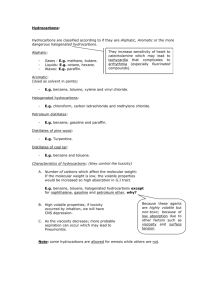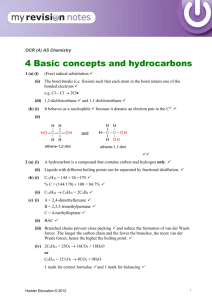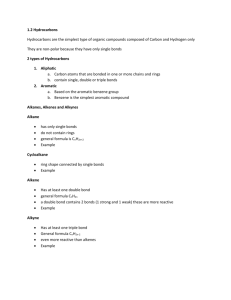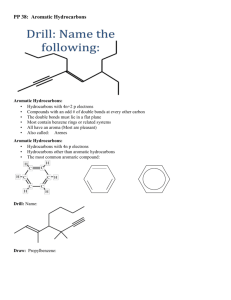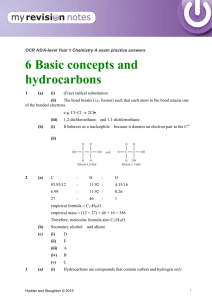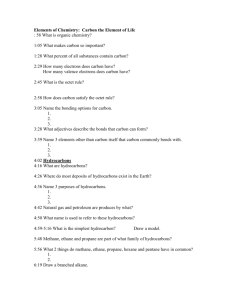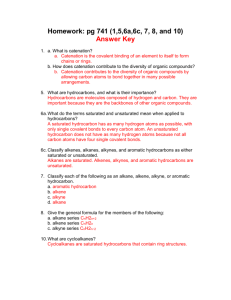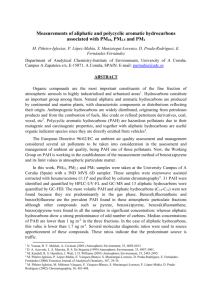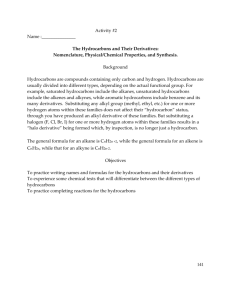Hydrocarbons toxicity Hydrocarbons are organic compounds that
advertisement
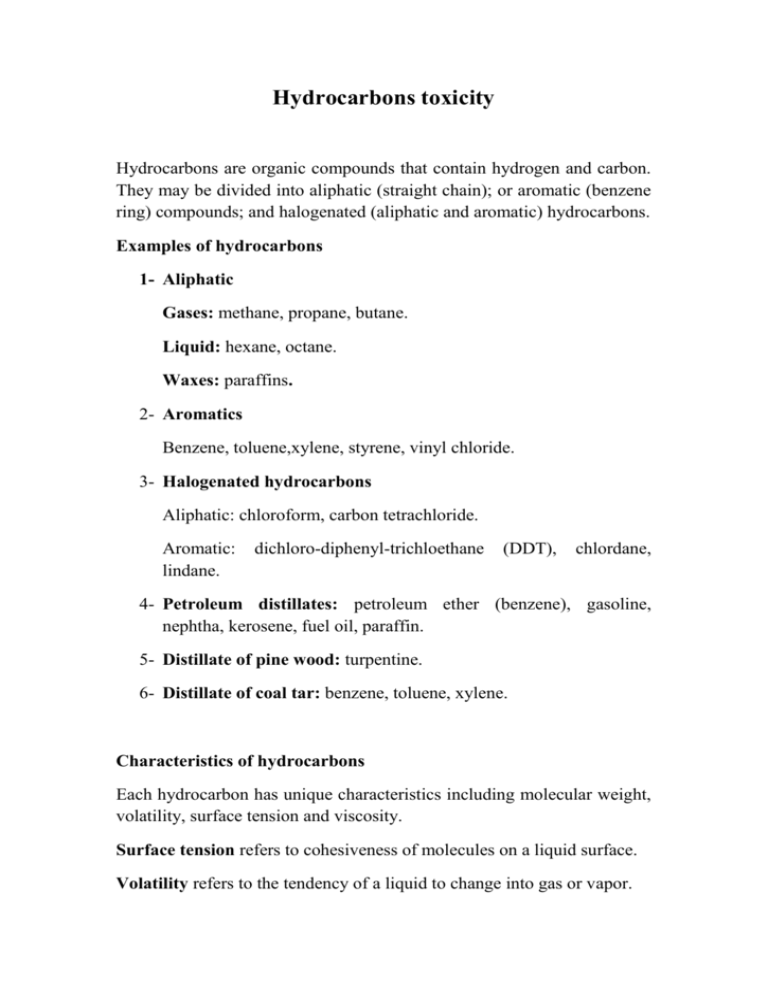
Hydrocarbons toxicity Hydrocarbons are organic compounds that contain hydrogen and carbon. They may be divided into aliphatic (straight chain); or aromatic (benzene ring) compounds; and halogenated (aliphatic and aromatic) hydrocarbons. Examples of hydrocarbons 1- Aliphatic Gases: methane, propane, butane. Liquid: hexane, octane. Waxes: paraffins. 2- Aromatics Benzene, toluene,xylene, styrene, vinyl chloride. 3- Halogenated hydrocarbons Aliphatic: chloroform, carbon tetrachloride. Aromatic: lindane. dichloro-diphenyl-trichloethane (DDT), chlordane, 4- Petroleum distillates: petroleum ether (benzene), gasoline, nephtha, kerosene, fuel oil, paraffin. 5- Distillate of pine wood: turpentine. 6- Distillate of coal tar: benzene, toluene, xylene. Characteristics of hydrocarbons Each hydrocarbon has unique characteristics including molecular weight, volatility, surface tension and viscosity. Surface tension refers to cohesiveness of molecules on a liquid surface. Volatility refers to the tendency of a liquid to change into gas or vapor. Viscosity refers to the resistance of a substance to flow over a surface. The most volatile hydrocarbons the low M.W. (C1-C5) gases and are asphyxiants. Aromatic hydrocarbons such as benzene, toluene and xylene are also volatile and well absorbed from GIT, they can produce systemic toxicity if absorbed. Some petroleum distillates are highly volatile but generally poor absorbed after ingestion. Inhalation of their fumes may cause CNS depression. Mechanism of toxicity The two most common routes of exposure to hydrocarbons inhalation and ingestion, ingestion is the more common one. Hydrocarbons ingestion produces toxic effects in the pulmonary, CNS, gastrointestinal, hepatic, and cardiovascular systems; pulmonary system is the most seriously damaged due to aspiration pneumonitis. Halogenated hydrocarbons particularly those containing fluorine sensitize the heart to catecholamines and induce arrhythmias in susceptible individuals. Petroleum distillate and turpentine Petroleum distillate ingestion involves a relatively small number of poisoning and not all of them are of aspiration risk. High viscous substances e.g. paints, glues, asphalt, rubber, cement etc. have little significant hazard of aspiration. Obstruction occurs greatly after ingestion of highly viscous product. Compounds with low viscosity and high volatility such as gasoline, kerosin have greater risk of aspiration. Pathogenesis 1- Gastrointestinal tract: produce GI irritation and burning, often resulting in emesis and risk of aspiration. 2- CNS: CNS depression after hydrocarbons ingestion is due to a direct effect on the CNS or occurs secondary to hypoxic cerebral damage resulting from chemical-induced pneumonitis.hughly volatile hydrocarbons as gasoline, benzene, toluene, turpentine and xylene are associated with greater risk of CNS toxicity because of their high lipid solubility. However large amount need to be swallowed and absorbed to produce significant CNS effects, they have a disagreeable taste and large volume and rarely ingested. 3- Respiratory system: pulmonary toxicity is primarily related to the aspiration of hydrocarbons during or after ingestion and vomiting. The risk of aspiration and lung damage is directly proportional to volatility and indirectly related to surface tension and viscosity. Hydrocarbons that most likely to be aspirated are highly volatile and have low surface tension and viscosity, these properties permit the hydrocarbons to move up the wall of the esophagus and enter the trachea. Characteristics of poisoning 1- Petroleum distillate and turpentine: Acute (inhalation, ingestion) GIT: nausea, vomiting, burning sensation, odor on breath. Respiratory: cough, shortness of breath, dyspnea, pulmonary edema and aspiration pneumonitis. CNS: Dizziness, depressed reflex, unconsciousness and convulsions. Chronic inhalation Dizziness, anemia, weakness, weight loss and parasthesia. 2- Aromatic hydrocarbons
